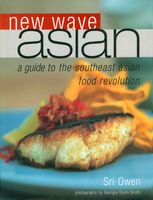Advertisement
Chillies and Chilli Sauces
Appears in
By Sri Owen
Published 2002
As a rough guide, the smaller and thinner the chilli, the hotter it is, at least where Southeast Asian chillies are concerned. The smallest and hottest are the little bird’s-eye chillies (❸ top left), but any single chilli can turn out unexpectedly bland or boisterous when you bite into it. Red or green -the colour makes no difference. The active component is capsaicin, a chemical produced mainly in the seeds and placental tissue, which is why in most of the recipes in this book you are asked to deseed your chillies. I don’t do this, of course, when I am cooking for Indonesian friends. The capsaicin does not actually burn your insides or cause any harm whatever, and chillies are full of vitamin C, so they actually do you good. However, wash your hands after handling chillies, and keep your fingers away from your eyes. If your mouth becomes unbearably hotwhile eating chillied food, the best coolant is plain boiled rice, preferably cold, or cucumber, or cold milk or yoghurt. Overheating is a common excuse for ordering more chilled beer, but this gives only temporary relief. Capsaicin is soluble in alcohol, but beerdoesn’t contain enough to be helpful.


